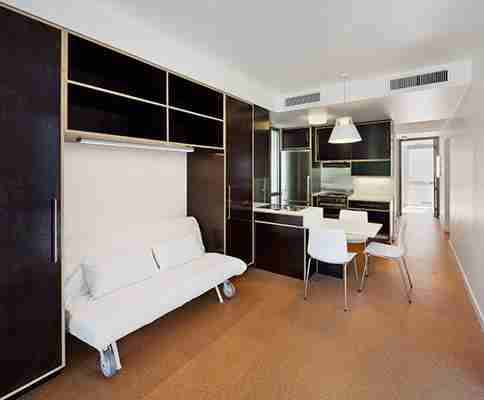The Newest Design for Post-Disaster Housing
It’s been nearly two years since Hurricane Sandy ravaged the East Coast and damaged or destroyed 650,000 homes. While shelters provided temporary relief for some evacuees, many required longer-term assistance, including the 22,000 households that were still displaced a year after the storm. Now New York City’s Office of Emergency Management has unveiled a potential solution for post-storm housing, incorporating six years of research and the lessons learned from Hurricane Sandy.

This summer the agency started testing the Urban Post-Disaster Housing Prototype, a multistory, multifamily structure constructed in an open lot in downtown Brooklyn. Garrison Architects designed the sustainably built prototype, which includes one three-bedroom unit, as well as another one-bedroom with an open gallery space. A far cry from the FEMA trailers seen after Hurricane Katrina, the comfortable apartments feature a living room, a bathroom, a fully equipped kitchen, cork floors, storage space, and a balcony. The modular design can be assembled on-site in 13.5 hours and can be deployed in empty lots, public spaces, even yards. "Aside from the basics of providing shelter after a disaster, the prototype is innovative because it allows residents to remain within their communities instead of being displaced for months, or even years," said James Garrison, principal of Garrison Architects, in a press release.

The prototype will be tested, studied, and occupied over the next year by groups from New York City’s Office of Emergency Management; the Pratt School of Architecture’s Recovery, Adaptation, Mitigation and Planning Program; and the Sustainable Urban Environments Program at Polytechnic Institute of New York University. With the city’s population growing and the risk of catastrophic storms rising as a result of climate change, the need for post-disaster housing solutions is becoming increasingly urgent nationwide. "These modules aren’t just for New York City," Garrison noted. "They were designed to meet the strictest zoning requirements in the U.S., meaning they can be quickly deployed to any corner of the country."
Group tours of the structure are available by appointment, for more information visit nyc.gov .
* *